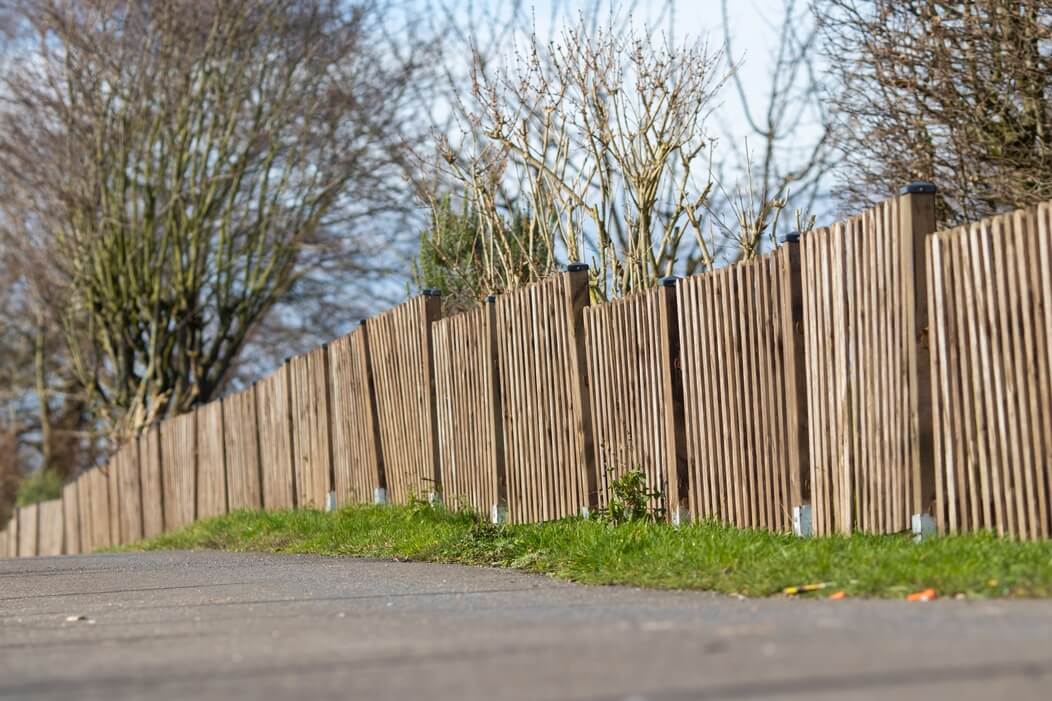When it comes to adding privacy, security, and curb appeal to their residences, wood fencing is a preferred choice among homeowners. Wooden fences may be found in many various forms to complement any home’s decor and are robust, versatile, and long-lasting. Wood fences not only give a functional purpose but also contribute to the property’s overall appeal with their warm, natural aspect. We’ll explore the numerous advantages of wood fencing, the variations that are available, installation and maintenance tips, cost considerations, and return on investment in this blog.
The Benefits of Wood Fencing
Wood fencing offers various benefits that make it a popular choice for homeowners. One of its main advantages is its appealing and natural look. Wood fences are available in a range of forms and finishes, from conventional picket fences to modern horizontal slat designs, which may enhance the curb appeal of any house. Additionally, wood is a versatile material that can be easily adapted to match any size or shape of the property, offering seclusion and security.
Moreover, wood fencing is also durable and long-lasting. According to the American Fence Association, a properly installed and maintained wood fence can last for up to 20 years or more. The natural resistance of certain types of wood, such as cedar and redwood, to insects and decay, makes them a popular choice for outdoor applications. In addition, regular maintenance, such as staining and sealing, can prolong the life of a wood fence. Overall, wood fencing’s attractiveness, durability, and versatility make it an excellent choice for homeowners seeking to enhance the value and beauty of their properties.
Types of Wood Fencing:
There are different varieties of wood fencing available in the market, each with its unique features and benefits. Some of the common types include privacy, picket, and split-rail fencing.
- Privacy Fencing: This style of fencing gives complete privacy and is often taller than other types of wood fencing. It’s a perfect solution for those who want to establish a hidden outdoor living place.
- Picket Fencing: Picket fences are a traditional and popular choice for their classic appeal. They’re shorter than privacy fences and have spaced vertical boards with pointed tops.
- Split-Rail Fencing: Split-rail fences are an attractive solution for rural or rustic estates. They comprise horizontal rails with vertical posts and create a basic and open look.
Pros and Cons:
- Privacy fencing offers complete privacy, but it can be expensive and block out natural light.
- Picket fencing provides a classic look and adds curb appeal to a property, but it doesn’t provide as much privacy or security as other types of fencing.
- Split-rail fencing is a cost-effective option and adds a rustic touch to a property, but it doesn’t provide as much privacy or security as other types of fencing.
Installation and Maintenance
Proper installation and maintenance of a wood fence are vital for its longevity and function. Here are some recommendations to help you install and maintain your wood fence:
- Choose a suitable location: Before erecting your fence, determine the property boundary and any local zoning laws. Also, consider aspects such as sunshine exposure, drainage, and potential impediments.
- Prepare the site: Clear any weeds and rubbish from the fence line. Dig the post holes and ensure they are deep enough to give a strong foundation. Use a level to ensure the posts are straight.
- Protect against pests and weather damage: Regularly inspect your fence for symptoms of deterioration, such as rot or insect infestation. Use a wood preservative or sealant to guard against moisture, and install metal or concrete posts to prevent rot and decay.
- Special considerations: Different types of wood have variable resistance to insects, rot, and weather damage. For example, cedar and redwood are inherently resistant to rot, but pressure-treated pine is treated with chemicals to fight decay and insects. In places with extreme weather conditions, consider selecting thicker or higher-grade wood to ensure endurance.
Cost and Return on Investment
The cost of wood fencing can vary based on numerous aspects, such as the type of wood, the length of the fence, and the complexity of the design. On average, homeowners may expect to pay between $1,500 and $4,500 for a 150-foot fence, with the cost of each linear foot ranging from $10 to $30.
Despite the initial cost, wood fencing can provide a return on investment by increasing the value of your home. According to Home Light, a well-maintained wood fence can increase the value of your home by up to 5%. Wood fencing can also enhance the curb appeal of your property, which can be a major selling point when it comes time to sell your home. Overall, wood fencing is an investment that can pay off in the long run by increasing the value and desirability of your home.
Conclusion
In conclusion, a wood fence is an attractive, sturdy, and versatile solution for homeowners wishing to enhance their property’s privacy and protection. With numerous varieties of wood fencing available, homeowners can choose the style that best meets their needs and preferences. Proper installation and maintenance can assure the fence’s lifespan, making it a worthwhile investment that can raise the value of your house. Consider wood fencing for your house border and visit a local fence company for further details.



